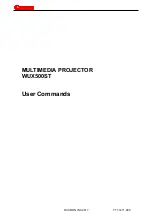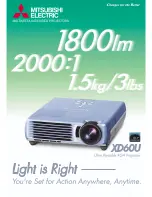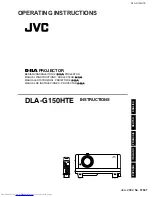
EN-16
16
Connecting a computer or monitor
Connecting a computer
The projector provides two VGA input sockets that allow you to connect them to both
IBM
®
compatibles and Macintosh
®
computers. A Mac adapter is needed if you are
connecting legacy version Macintosh computers.
To connect the projector to a notebook or desktop computer:
1.
Take the supplied VGA cable and connect one end to the D-Sub output socket of
the computer.
2.
Connect the other end of the VGA cable to the
COMPUTER IN 1
or
COMPUTER
IN 2
signal input socket on the projector.
Important
Many notebooks do not turn on their external video ports when connected to
a projector. Usually a key combo like FN + F3 or CRT/LCD key turns the
external display on/off. Locate a function key labeled CRT/LCD or a function
key with a monitor symbol on the notebook. Press FN and the labeled
function key simultaneously. Refer to your notebook's documentation to find
your notebook's key combination.
Connecting a monitor
If you want to view your presentation close-up on a monitor as well as on the screen,
you can connect the
COMPUTER OUT
signal output socket on the projector to an
external monitor with a VGA cable following the instructions below:
To connect the projector to a monitor:
1.
Connect the projector to a computer as described in
“Connecting a computer” on
page 16
.
2.
Take a suitable VGA cable (only one supplied) and connect one end of the cable
to the
D-Sub input socket of the video monitor.
Or if your monitor is equipped with a DVI input socket, take a VGA to DVI-A cable
and connect the DVI end of the cable to the DVI input socket of the video monitor.
3.
Connect the other end of the cable to the
COMPUTER OUT
socket on the
projector.
Important
The
COMPUTER OUT
output only works when
COMPUTER IN 1
or
COMPUTER IN 2
is made to the projector.
Содержание PJD5123
Страница 31: ...EN 26 26 ...
Страница 55: ......
















































